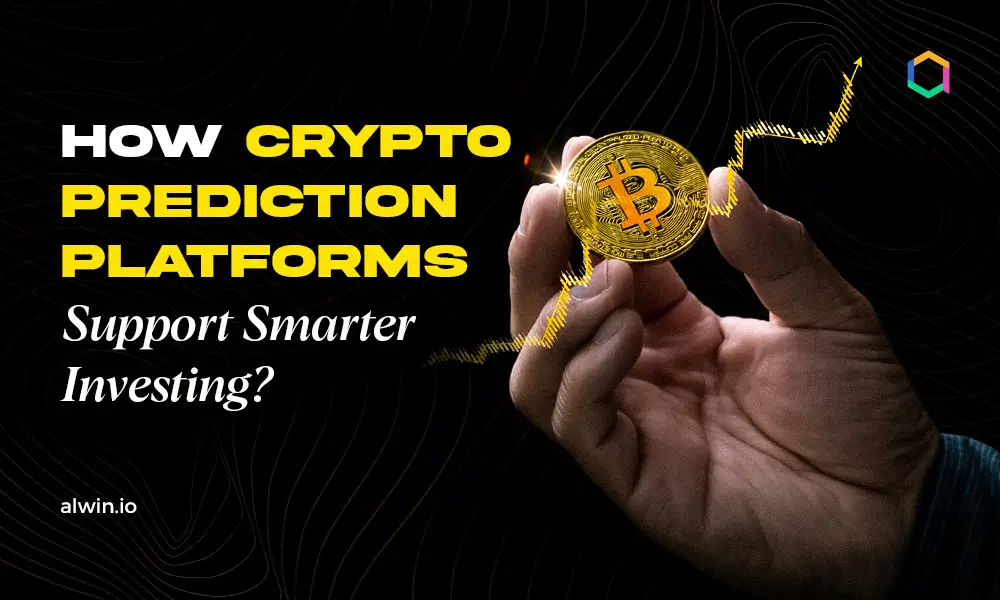As the digital and physical worlds merge, DePIN (Decentralized Physical Infrastructure Networks) is becoming a key enabler of Web3. It redefines how infrastructure is built, owned, and managed by eliminating central control and promoting decentralized participation. DePIN integrates physical infrastructure with blockchain, allowing Web3 applications to operate on robust, transparent systems. Whether supporting decentralized IoT networks or tokenized infrastructure models, DePIN brings Web3 principles into real-world applications.
By the end of this blog, you’ll understand why DePIN in Web3 is not just a technological innovation but a shift in how we think about infrastructure.
What is DePIN?
DePIN, short for Decentralized Physical Infrastructure Networks, offers a new approach to managing physical infrastructure. Instead of relying on centralized entities like governments or corporations, DePIN uses blockchain to distribute control, increase transparency, and reward participation through tokenization.
Breaking Down DePIN
Imagine a traditional internet service provider (ISP) controlling network access, pricing, and upgrades. If its central hub fails, the entire system breaks down. DePIN changes this by the below points,
Decentralized Control: Infrastructure is managed collectively by participants.
Rewards for Contribution: Participants (like device owners) earn tokens for supporting the network.
Scalability: The decentralized model makes the system more robust and adaptable.
For example, In a DePIN-powered IoT network, individuals can deploy connectivity devices and earn cryptocurrency while enabling others to access the network.
Why DePIN is Important for Blockchain and Web3?
DePIN (Decentralized Physical Infrastructure Networks) plays a key role in the development of Web3 by connecting the physical and digital worlds. Here's why it matters
Empowering Decentralized Ownership
DePIN allows individuals to participate in infrastructure ownership and governance, removing the need for centralized entities like governments or corporations. This decentralization aligns with Web3's core principles of giving more control to individuals rather than relying on central authorities.
Connecting Physical and Digital Worlds
DePIN links physical assets, such as IoT devices, energy grids, or transportation systems, with blockchain technology. This connection allows Web3 applications to operate on real-world infrastructure, supporting solutions like decentralized smart cities, renewable energy markets, and more.
Creating New Economic Models
By tokenizing physical infrastructure, DePIN introduces new economic models where participants are rewarded for contributing resources. These tokenized incentives promote active participation and engagement, helping sustain decentralized networks.
Scalability and Resilience
Unlike traditional centralized systems, DePIN networks are more resilient. Decentralization removes single points of failure, making the system stronger and scalable. As Web3 grows, DePIN will help meet the demand for decentralized infrastructure with flexible and efficient solutions.
Web3's Vision of a Trustless and Transparent Ecosystem
DePIN uses blockchain’s transparency, security, and immutability. These features ensure that decentralized infrastructure systems are verifiable, auditable, and secure, building trust among participants and allowing trustless interactions without intermediaries.
DePIN plays a significant role in making Web3’s decentralized vision a reality, improving industries like energy, transportation, IoT, and more.
Examples of DePIN-Powered Web3 Use Cases
DePIN (Decentralized Physical Infrastructure Networks) is transforming industries by enabling decentralized solutions for real-world problems. Here are some key examples of how DePIN is being applied across different sectors:
Decentralized IoT Networks (Helium Network)
The Helium Network allows individuals to deploy wireless hotspots and create decentralized IoT connectivity. Participants contribute bandwidth and coverage, earning tokens for their efforts, which collectively form a global IoT infrastructure without the need for a central provider.
Decentralized Energy Grids (Grid+)
DePIN is revolutionizing energy distribution by enabling individuals with renewable energy sources, like solar panels, to sell surplus power through a blockchain-powered grid. This decentralized model reduces reliance on traditional energy companies and promotes cleaner energy use.
Decentralized Transportation Systems
DePIN facilitates decentralized ride-sharing platforms where drivers and passengers connect directly without the need for intermediaries. This lowers transportation costs and promotes a community-driven, more efficient system for mobility.
Decentralized Storage Networks (Filecoin)
Filecoin creates a decentralized data storage network, allowing individuals to rent out unused storage space. Participants earn FIL tokens by contributing their storage resources, creating a global, scalable storage solution while incentivizing contributions.
Smart Agriculture Networks
In decentralized agricultural systems, farmers can deploy IoT devices and sensors to monitor environmental conditions, soil health, and crop growth. The collected data is shared on a blockchain, and contributors are rewarded with tokens. This model helps farmers optimize their practices and make data-driven decisions.
Decentralized Logistics and Supply Chains
DePIN enhances supply chain transparency by recording every step of product movement on a blockchain. This decentralized system improves traceability, ensures product authenticity, and fosters trust across the global trade network.
Decentralized Communication Networks
DePIN enables the creation of decentralized mesh networks for communication, where users contribute their devices as nodes. These networks provide uninterrupted communication by bypassing traditional telecommunications companies, creating a resilient, community-based communication infrastructure.
These examples illustrate how DePIN is shaping industries by decentralizing infrastructure, creating new economic models, and building trust through transparency. By integrating blockchain with physical systems, DePIN is encouraging community-driven participation across sectors.
Challenges in Adopting DePIN
While DePIN (Decentralized Physical Infrastructure Networks) offers significant potential for transforming industries, several challenges must be addressed to ensure its widespread adoption. Here are some of the key obstacles:
Scalability Issues
As DePIN networks grow, they face challenges related to hardware limitations and potential bottlenecks. For example, the need for more physical devices (such as sensors or IoT equipment) to join the network can create strain on the infrastructure. As the number of participants increases, ensuring the system remains efficient and scalable requires ongoing innovation in hardware, network design, and integration.
Solution: Implementing Layer 2 solutions, edge computing, and other scalability-focused technologies can help manage growing data demands and ensure smoother performance.
Regulatory Uncertainty
DePIN operates in a decentralized manner, which can conflict with existing regulations concerning data privacy, licensing, taxation, and other legal aspects. Many countries have not yet developed clear regulations for blockchain-based physical infrastructure, which can cause uncertainty for both developers and users.
Solution: Engaging with regulators early on and establishing self-regulatory frameworks within the DePIN ecosystem will be crucial in navigating these challenges. Clearer regulatory guidelines will promote the long-term viability of decentralized infrastructure models.
Adoption Barriers
There is still a lack of widespread awareness and understanding of DePIN technology. Traditional, centralized models dominate industries, and many stakeholders are hesitant to transition to decentralized alternatives due to unfamiliarity with the technology or perceived risks.
Solution: Increased education and awareness campaigns, pilot projects, and incentives for early adopters can help overcome these adoption barriers. Demonstrating the real-world benefits of DePIN, such as reduced costs and enhanced efficiency, can also encourage wider participation.
Hardware and Infrastructure Costs
While decentralized infrastructure systems like DePIN promise long-term cost savings, the initial investment in hardware and technology can be high. The cost of purchasing devices like sensors, routers, and storage for decentralized networks may be a barrier for some individuals or organizations looking to participate.
Solution: As hardware costs decrease over time and economies of scale kick in, DePIN’s affordability will improve. Additionally, partnerships and collaborations between businesses and DePIN projects can help share the initial costs and reduce the financial burden on individual participants.
Integration Complexity
Integrating decentralized networks into existing systems and infrastructure can be complex and require significant changes to legacy technologies. For industries accustomed to centralized models, transitioning to a decentralized structure may require new software, protocols, and governance structures, which can complicate the adoption process.
Solution: Gradual adoption and hybrid models, where DePIN networks work alongside traditional infrastructure, can make the transition smoother. Developing more user-friendly solutions and robust onboarding processes will also help ease the integration process.
Security Concerns
While blockchain technology is inherently secure, decentralized networks still face risks such as potential vulnerabilities in smart contracts, attacks on physical infrastructure, or malicious actors attempting to compromise the system. Ensuring robust security in both digital and physical layers is vital to prevent malicious activities that could undermine the trustless nature of DePIN.
Solution: Continuous improvements in cybersecurity practices, regular audits, and the adoption of decentralized security protocols will be necessary to protect against threats. A proactive approach to identifying and addressing vulnerabilities will increase the resilience of DePIN networks.
The Future of DePIN in Web3
The future of DePIN (Decentralized Physical Infrastructure Networks) in the Web3 ecosystem is set to play a central role in transforming how decentralized applications (dApps) and services operate. As blockchain technology advances, the integration of decentralized physical infrastructure will create new opportunities and shift how industries manage and interact with infrastructure. Here’s a look at the future of DePIN in Web3:
Growth and Expansion of DePIN
DePIN is expected to become a key component in Web3, expanding across a wide range of industries. As decentralized models continue to be adopted, more participants will engage in building, maintaining, and benefiting from decentralized infrastructure.
Projected Growth
DePIN networks will experience growth as adoption increases. Key areas of expansion include:
As the technology becomes more accessible and hardware costs decrease, more individuals and organizations will contribute to decentralized physical infrastructure.
While DePIN is currently prominent in sectors like IoT, energy, and transportation, its applications will extend into industries like healthcare, logistics, and manufacturing.
AI-Powered DePIN
Artificial intelligence will optimize decentralized networks, improving resource allocation, predicting demand, and enhancing the performance of devices within DePIN networks. AI will allow for real-time decision-making, boosting the overall efficiency of decentralized systems.
IoT Integration
As more IoT devices are deployed, DePIN will enable these devices to communicate and share data in decentralized networks. This will allow for a wide variety of real-world applications, such as smart cities and connected industries, where devices function autonomously within the DePIN framework.
Cross-Network Interoperability
For DePIN to reach its full scope, it must integrate with other Web3 ecosystems. Interoperability between different decentralized networks will allow for seamless data and resource sharing across industries, driving global cooperation and creating a connected Web3 ecosystem.
Energy
DePIN will change the energy sector by enabling decentralized energy grids, where individuals can produce, sell, and share renewable energy through peer-to-peer trading. This reduces reliance on centralized energy providers and promotes sustainability.
Transportation
In transportation, DePIN will facilitate decentralized mobility networks, such as ride-sharing platforms and autonomous vehicle systems, lowering costs and providing users with greater control over their transportation options.
Logistics and Supply Chain
DePIN’s transparency and immutability will bring efficiency and accountability to supply chains. Real-time tracking and decentralized logistics networks will improve coordination, reduce fraud, and optimize supply chain operations.
The Road Ahead for DePIN and Web3
The future of DePIN in Web3 is promising, with the ability to transform how infrastructure is built, owned, and governed. As technology advances, it will create new economic opportunities by democratizing access to infrastructure ownership. Improve the resilience and transparency of critical systems by decentralizing control. Foster more efficient, sustainable, and participatory networks that benefit individuals and communities.
DePIN will become a foundational element in Web3, helping bridge the gap between the digital and physical worlds. By overcoming scalability challenges, regulatory hurdles, and adoption barriers, DePIN will continue to reshape industries such as energy, transportation, logistics, and beyond, offering new ways for people to engage with and benefit from decentralized infrastructure. With its growth, DePIN will pave the way for a more decentralized, efficient, and transparent future.
Conclusion
DePIN transforms infrastructure by introducing decentralized ownership, governance, and economic opportunities. By bridging physical systems with blockchain, DePIN becomes a critical component of Web3 development, driving the evolution of this transformative ecosystem. As it addresses challenges in scalability, regulation, and adoption, DePIN is poised to revolutionize industries and empower communities worldwide.
If you're ready to explore or build DePIN solutions, WeAlwin Technologies can help. With expertise in blockchain and decentralized systems, we’ll guide you in realizing Web3’s capabilities.



